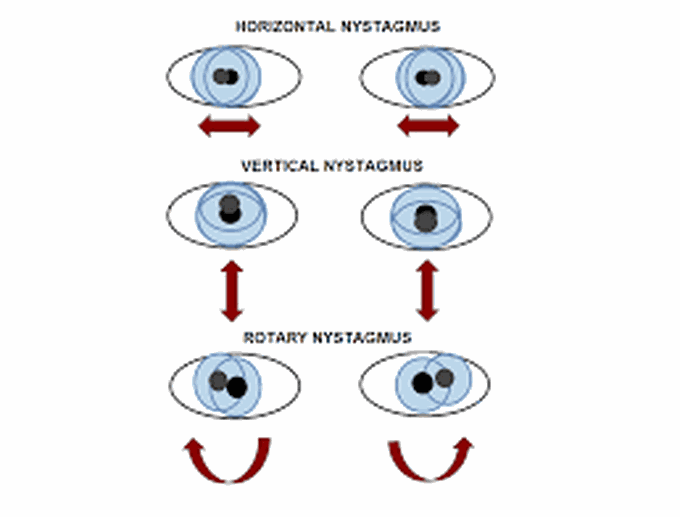


Causes of nystagmus
Your brain controls eye movement in conjunction with the structures in your ear, called the vestibular system. It automatically adjusts your eyes when you move your head so that the image you see remains in focus. In people with nystagmus, a problem prevents your brain, the vestibular system and your eyes from working together. Nystagmus could indicate another eye problem, a neurological condition or a problem with the parts of your inner ear that control balance and coordination. Nystagmus causes and risk factors include: Developmental problems with your brain or eye. Retina or optic nerve disorders. Inner ear disorders, such as benign paroxysmal positional vertigo (BPPV) and Ménière’s disease. Stroke. Brain tumor. Eye or head trauma (injury). Alcohol or drug use. Albinism (lack of pigmentation in the skin). Vision problems, including nearsightedness or astigmatism. Certain medications, such as antiseizure drugs. Diseases affecting your central nervous system, like multiple sclerosis (MS). Eye problems in babies, including strabismus (crossed eyes), focusing issues and cataracts. Sometimes, there isn’t a clear cause. This is called idiopathic nystagmus.
Xerophthalmia
Acute Conjunctivitis (Pink Eye) | Allergic, Bacterial, Viral | Symptoms, Diagnosis, TreatmentWhat causes eye freckles? Are they dangerous?Strabismus: Everything You Need To KnowFATTY DEPOSITS of CHOLESTEROL around EYES | How to get rid of it?-Dr.Rajdeep Mysore|Doctors' CircleGlaucoma

